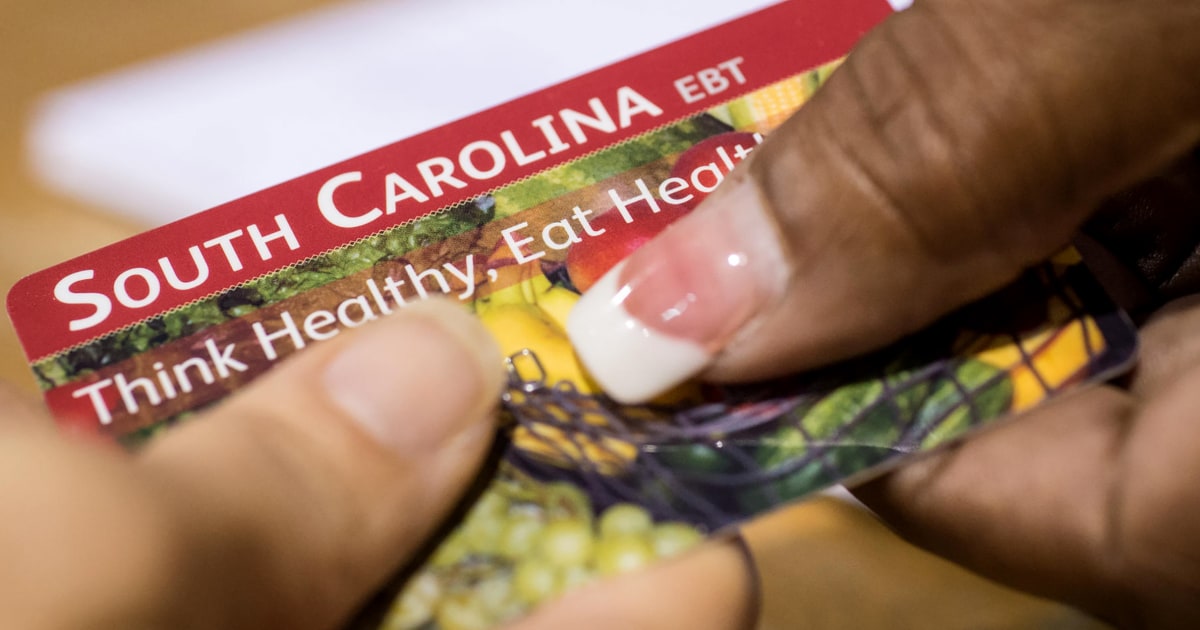Food inflation rises in the US 1:02
(CNN) --
Putting food on the table will be much harder for millions of Americans starting in March of this year.
Food stamp recipients will each receive about $90 less in benefits per month, on average, as a pandemic hunger relief program comes to an end across the country, three years after Congress I would approve it.
All households in the Supplemental Nutrition Assistance Program, or SNAP, as food stamps are formally known, will see their monthly benefits reduced by at least $95. Some larger families could experience monthly reductions of $250 or more, according to the left-leaning Center on Budget and Policy Priorities.
“It's something that people are going to notice,” said Dottie Rosenbaum, director of SNAP Federal Policy at the center.
"That's $3 billion a month that went to food that won't be there anymore."
This is prompting food banks and pantries, already stretched thin by rising demand due to rising grocery prices, to brace for a further surge in needs.
advertising
Food prices are through the roof, but there is a highly coveted one that drops in price
The End of Emergency Food Stamps
Congress voted to end the emergency appropriations for the pandemic, after the money was issued in February as part of the government financing package, which was approved late last year.
The legislation also created a permanent summer benefit program to provide funds for families of some 30 million children to buy groceries instead of school meals during the holidays.
The cut in food stamps will be felt in the 32 states and the District of Columbia that were still providing the emergency allotments, which increased monthly benefits to the maximum for household size or at least $95 per month.
Some 18 states have already ended the benefits due to the pandemic.
More than 42 million Americans received food stamps as of November, according to the most recent federal data.
Without the boost from the pandemic, the average food stamp benefit will be about $6 per person per day in 2023, instead of about $9, according to the center.
Food stamp recipients in states that have already terminated the program are feeling the pinch, said Stacy Taylor, head of Policy and Partnerships at Propel, a software company that offers an app to check SNAP benefit balances.
Those who live in these states report higher rates of skipping meals, eating less, relying on others for meals and visiting food pantries than their peers in states that continued emergency allocations, Taylor said, citing monthly surveys. of Propel from its more than 5 million users.
At the same time, most of his clients in every state say they have less than $25 available to cover expenses.
“When the SNAP benefit is cut off, where will that cushion come from?” Taylor wondered.
For Pam Ford, the $95 monthly increase meant she was able to buy more milk, fresh fruits and vegetables, crackers, and peanut butter for her children, ages 1 and 4, a $645 benefit to stock up on steaks, ground beef and canned fish for future meals.
The Cleveland resident is already formulating recipes that will expand her supplies, such as Mexican dishes that call for beans and rice.
She also plans to serve more breakfasts for dinner.
“Anything that still has substance, but doesn't cost as much as everything else,” said Ford, 46, who is unemployed.
Emergency allocations kept 4.2 million people out of poverty in 2021, reducing poverty by nearly 10% and child poverty by 14%, according to a study by the Urban Institute.
In addition to the cessation of emergency allocations, some food stamp recipients may face additional hurdles once the public health emergency ends on May 11.
Several other pandemic provisions will end at that time, including the suspension of the three-month time limit for certain childless, non-disabled adults who are not working, the expansion of eligibility for certain college students, and additional flexibilities for states to apply. Help manage your workload.
Why 75% of Likely Voters Think the US Is in a Recession, Even though It Probably Isn't
This is how US families survive inflation and food shortages 3:31
More people flock to food banks
To prepare for the end of the drive, Ford signed up to go to a local food pantry.
Anti-hunger groups across the country hope many others will do the same.
It comes at a time when food banks are already dealing with high inflation, which has led more people to turn to them and made it more expensive for them to provide supplies to those in need.
Also, food banks receive fewer donations, forcing them to use their funds to buy groceries.
“We are moving from a pandemic crisis to a hunger crisis,” said Vince Hall, director of government relations for Feeding America, a national network of 200 food banks and 60,000 pantries and meal programs.
About three-quarters of food banks report that ending emergency allocations has increased demand, according to a Feeding America member survey conducted in January.
Many food stamp recipients were not notified in states that have already canceled the increase.
“It was just something that suddenly and disturbingly happened to families who are already struggling to pay for the basics of life, like rent, gas, health care and, of course, food,” Hall said.
The Atlanta Community Food Bank experienced a 40% increase in demand in December compared to the same month a year earlier.
A third to half of that increase is likely due to the state ending emergency appropriations last summer, said Kyle Waide, executive director of the nonprofit, which provides nearly 10 million pounds of food. per month to nearly 700 community partners, including pantries, senior centers, schools and shelters, in Georgia.
“If you're someone who can't meet your basic needs with your existing resources, every $10, $20, or $30 counts.
It allows you to get a little more nutrition for your family,” Waide said.
For Tari Aguilar, who lives in a park in Long Beach, California, the end of her $95 emergency allowance means she'll have to go to a food bank for canned goods, vegetables, and bread to supplement the roughly $95. 200 in food stamps that he receives each month.
The increase in her allowed her to enjoy a hot meal at a fast food joint once a month.
But it also meant that his benefits would last until the next month, which was not the case before the pandemic.
“It made things easier,” said Aguilar, 52.
"There were just no concerns at the end of the month."
US inflation







